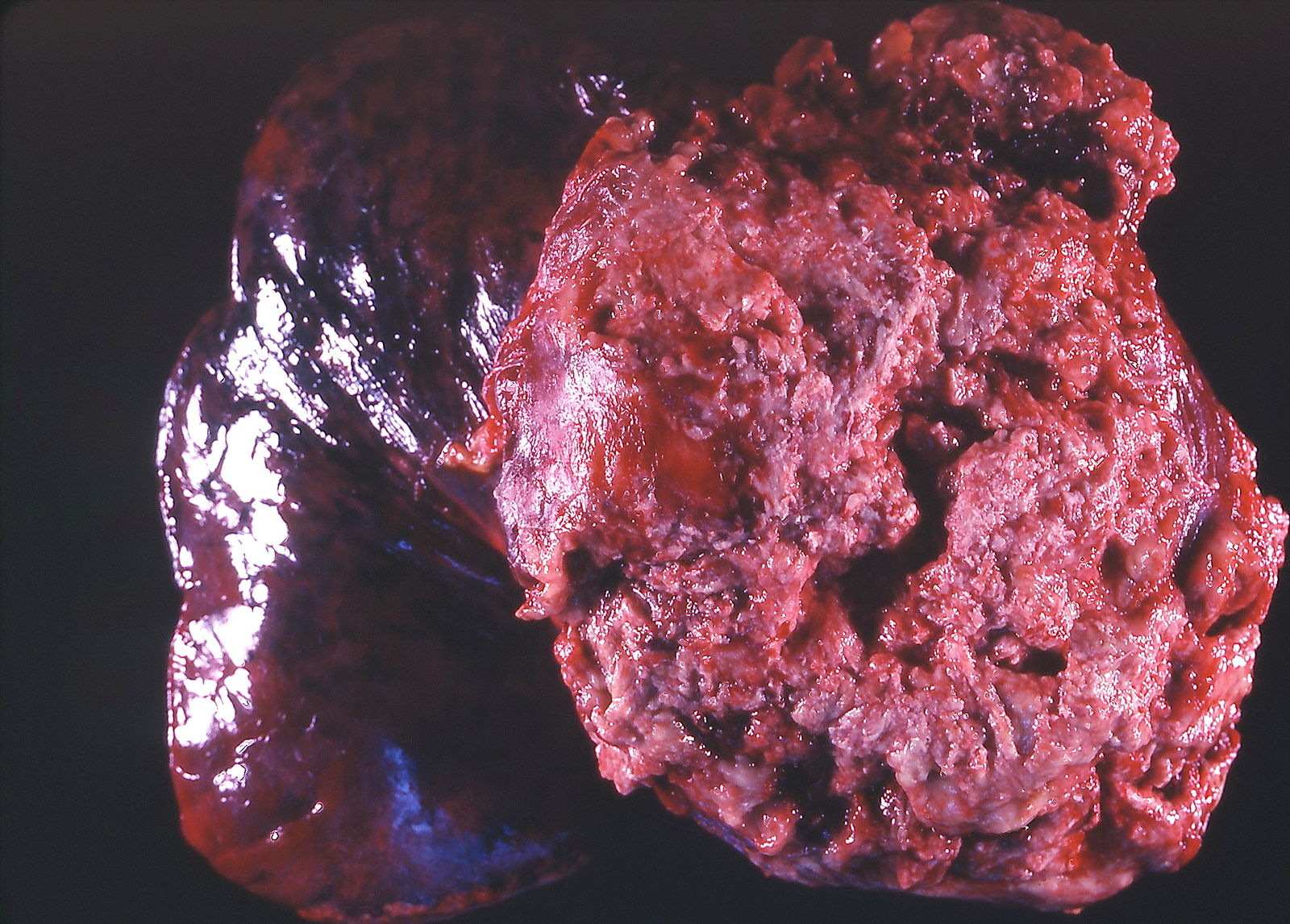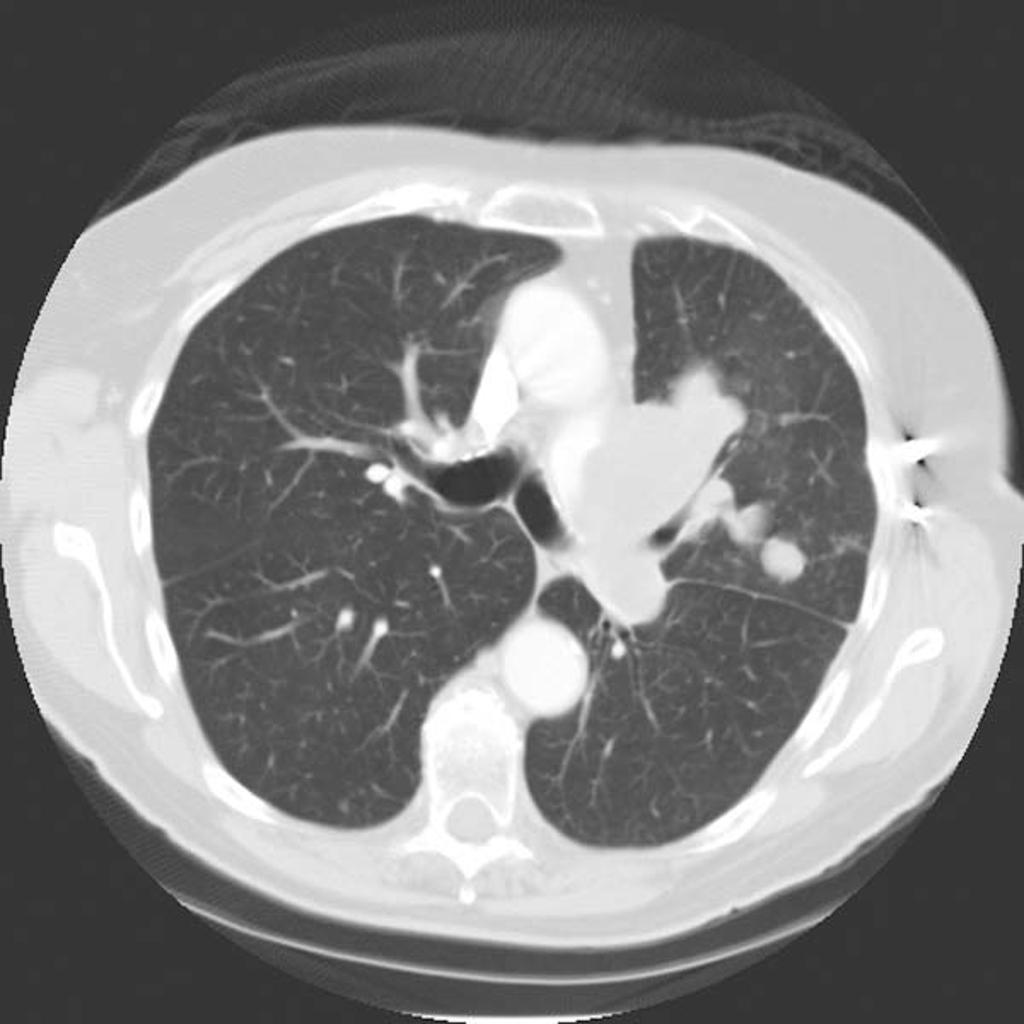Angiosarcoma: Difference between revisions
| Line 73: | Line 73: | ||
==Risk Factors== | ==Risk Factors== | ||
*Common risk factors in the development of angiosarcoma, include: | *Common risk factors in the development of angiosarcoma, include:<ref name="pmid20537949">{{cite journal |vauthors=Young RJ, Brown NJ, Reed MW, Hughes D, Woll PJ |title=Angiosarcoma |journal=Lancet Oncol. |volume=11 |issue=10 |pages=983–91 |year=2010 |pmid=20537949 |doi=10.1016/S1470-2045(10)70023-1 |url=}}</ref> | ||
:*Chronic lymphedema | :*Chronic lymphedema | ||
:*Polyvinyl chloride (PVC) | :*Polyvinyl chloride (PVC) | ||
Revision as of 14:29, 22 April 2016
|
WikiDoc Resources for Angiosarcoma |
|
Articles |
|---|
|
Most recent articles on Angiosarcoma Most cited articles on Angiosarcoma |
|
Media |
|
Powerpoint slides on Angiosarcoma |
|
Evidence Based Medicine |
|
Clinical Trials |
|
Ongoing Trials on Angiosarcoma at Clinical Trials.gov Clinical Trials on Angiosarcoma at Google
|
|
Guidelines / Policies / Govt |
|
US National Guidelines Clearinghouse on Angiosarcoma
|
|
Books |
|
News |
|
Commentary |
|
Definitions |
|
Patient Resources / Community |
|
Patient resources on Angiosarcoma Discussion groups on Angiosarcoma Patient Handouts on Angiosarcoma Directions to Hospitals Treating Angiosarcoma Risk calculators and risk factors for Angiosarcoma
|
|
Healthcare Provider Resources |
|
Causes & Risk Factors for Angiosarcoma |
|
Continuing Medical Education (CME) |
|
International |
|
|
|
Business |
|
Experimental / Informatics |
Editor-In-Chief: C. Michael Gibson, M.S., M.D. [1] Associate Editor(s)-in-Chief: Maria Fernanda Villarreal, M.D. [2]
Synonyms and keywords: Hemangiosarcoma; Pulmonary angiosarcoma; Vascular sarcoma
Overview
Angiosarcoma is a rare malignant vascular neoplasm of endothelial-type cells that line vessel walls.[1] Angiosarcoma was first discovered by Rosai and colleagues, in 1976.[2] The pathogenesis of angiosarcoma is characterized by a rapid and extensively infiltrating overgrowth of vascular epithelial cells. Common angiosarcoma locations, include: kidney, liver, lung, breast, and liver. The PTPRB /PLCG1 genes have been associated with the development of angiosarcoma, the mutation results in aberrant angiogenesis. The imaging modality of choice for angiosarcoma will depend on the location. For pulmonary angiosarcoma, the imaging modality of choice is enhanced CT scan.[3] For other types angiosarcoma, the imaging modality of choice is MRI. On CT, findings of angiosarcoma may include: vascular invasion, nodular enhancement (common), and a hypoattenuating mass.
Historical Perspective
- Angiosarcoma was first discovered by Rosai and colleagues, in 1976.[2]
Classification
- Angiosarcoma may be classified according to anatomical location, into the following categories:
- Head and neck angiosarcomas
- Skin angiosarcomas
- Liver angiosarcomas
- Lung angiosarcomas
- Spleen angiosarcomas
- Others/uncategorised
Pathophysiology
- The pathogenesis of angiosarcoma is characterized by a rapid and extensively infiltrating overgrowth of vascular epithelial cells.
- Angiosarcoma is a locally aggressive tumor with a high rate of lymph node infiltration and metastases.
- Common angiosarcoma locations, include: kidney, liver, lung, breast, and liver.
- The PTPRB /PLCG1 genes have been associated with the development of angiosarcoma, as a result generate aberrant angiogenesis.
- On gross pathology, characteristic findings of angiosarcoma, may include:
- Red/dark tan lesion
- Typically poorly circumscribed
- The image below demonstrates gross pathology of angiosarcoma
-
Gross pathology: angiosarcoma
Courtesy of Libre Pathology
- On microscopic histopathological analysis, characteristic findings of angiosarcoma, may include:
- Spindle cell lesion.
- Occasionally an epitheloid lesion
- Very many small capillaries of irregular shape
- Pleomorphic nuclei
- May have hobnail morphology
- Usually "red" at low power (key feature)
- Mitoses
- Cytoplasmic vacuoles
- Cells trying to form lumina
Causes
- Common causes of angiosarcoma may include:
- Exposure to vinyl chloride monomer (VCM) for prolonged periods
- Exposure to polyvinyl chloride (PVC) polymerisation plants
- Exposure to arsenic-containing insecticides
- Previous exposure to radioactive compound thorium dioxide
Differentiating Angiosarcoma from Other Diseases
- Angiosarcoma must be differentiated from other diseases that cause a highly vascular mass, such as:
- Atypical vascular lesions
- Hemangioma
- Glomangiosarcoma
- Carotid body tumor
- Malignant fibrous histiocytoma of soft tissue
Epidemiology and Demographics
- Angiosarcoma is uncommon.
- In 2004, the age-adjusted incidence of angiosarcoma was 3.1 per 100,000 population per year.[3]
Age
- Angiosarcoma is more commonly observed among patients aged between 40 to 75 years old.[3]
- Angiosarcoma is more commonly observed among middle aged adults and elder patients.[3]
Gender
- Males are more commonly affected with angiosarcoma than females.[3]
- The male to female ratio is 2:1.
Race
- There is no racial predilection for angiosarcoma.
Risk Factors
- Common risk factors in the development of angiosarcoma, include:[4]
- Chronic lymphedema
- Polyvinyl chloride (PVC)
- Radiation exposure
- Thorotrast
Natural History, Complications and Prognosis
- The majority of patients with angiosarcoma remain asymptomatic for years.[4]
- Early clinical features may include unspecific general symptoms, such as: pain, fatigue, malaise, and nausea.
- If left untreated, the majority of patients with angiosarcoma may progress to develop metastases.[3]
- Common complications of angiosarcoma, include:
- Pathologic fractures
- Anemia
- Hepatic dysfunction
- Prognosis is generally poor and the 5-year survival rate of patients with angiosarcoma is approximately 12-33%.
- Factors related with worse prognosis, include: patient age (> 65), retroperitoneum location, and large tumor size.[3]
Diagnosis
Symptoms
- Angiosarcoma is usually asymptomatic and found incidentally.
- There are no remarkable symptoms for angiosarcoma.
Physical Examination
- Patients with angiosarcoma usually appear cachectic, or normal.
- There are no remarkable physical examination findings for patients with angiosarcoma.
Laboratory Findings
- There are no specific laboratory findings associated with angiosarcoma.
Imaging Findings
- The imaging modality of choice for angiosarcoma will depend on the location.
- For pulmonary angiosarcoma, the imaging modality of choice is enhanced CT scan.[3]
- For other types angiosarcoma, the imaging modality of choice is MRI.
- On CT, findings of angiosarcoma may include:[3]
- Vascular invasion
- Nodular enhancement (common)
- Hypoattenuating mass
- Multicentric
On MRI, findings of angiosarcoma may include:
- T1/T2: heterogeneous areas of high signal reflecting mixed tumour and haemorrhage
- T1 C+ (Gd): heterogeneous enhancement
Gallery
-
CT Pulmonary angiosarcoma
Courtesy of Radiopedia
Treatment
Medical Therapy
- The mainstay of therapy for angiosarcoma is a doxorubicin-based regimen.[4]
- For angiosarcoma, doxorubicin monotherapy is indicated as first-line therapy.[4]
- For patients with pulmonary angiosarcoma, combination of radiotherapy and immunotherapy with recombinant interleukin-2 is the treatment of choice.[5]
- Common complications of doxorubicin, include:
- Chronic cardiotoxicity
- Mucositis
- Alopecia
- Nausea
- Vomiting
Surgery
- Surgical resection in combination with radiation therapy is the treatment of choice for small angiosarcoma.[4]
- Surgical treatment for patients with cutaneous angiosarcoma is surgical resection with wide margins.[4]
- Surgery is not recommended on patients with large sized angiosarcomas.
- The recurrence of angiosarcoma after surgery is 80%.
Prevention
- There are no primary preventive measures available for angiosarcoma.
- Once diagnosed and successfully treated, patients with angiosarcoma are followed-up every 3, 6, or 12 months depending on the stage at diagnosis.
- Follow-up testing for angiosarcoma, include:[4]
- Periodical imaging/angiography evaluation
- Laboratory testing: complete blood count (eg. anemia)
References
- ↑ Perkins, [edited by] Vinay Kumar, Abul K. Abbas, Jon C. Aster ; artist, James A. (2013). Robbins basic pathology (9th ed. ed.). Philadelphia, PA: Elsevier/Saunders. ISBN 9781437717815.
- ↑ 2.0 2.1 Barber W, Scriven P, Turner D, Hughes D, Wyld D (2010). "Epithelioid angiosarcoma: Use of angiographic embolisation and radiotherapy to control recurrent haemorrhage". J Surg Case Rep. 2010 (5): 7. doi:10.1093/jscr/2010.5.7. PMC 3649120. PMID 24946325.
- ↑ 3.0 3.1 3.2 3.3 3.4 3.5 3.6 3.7 3.8 Sturgis EM, Potter BO. Sarcomas of the head and neck region. Curr Opin Oncol. 2003 May. 15(3):239-52
- ↑ 4.0 4.1 4.2 4.3 4.4 4.5 4.6 Young RJ, Brown NJ, Reed MW, Hughes D, Woll PJ (2010). "Angiosarcoma". Lancet Oncol. 11 (10): 983–91. doi:10.1016/S1470-2045(10)70023-1. PMID 20537949.
- ↑ Duck L, Baurain JF, Machiels JP (2004). "Treatment of a primary pulmonary angiosarcoma". Chest. 126 (1): 317–8, author reply 318. doi:10.1378/chest.126.1.317. PMID 15249484.

